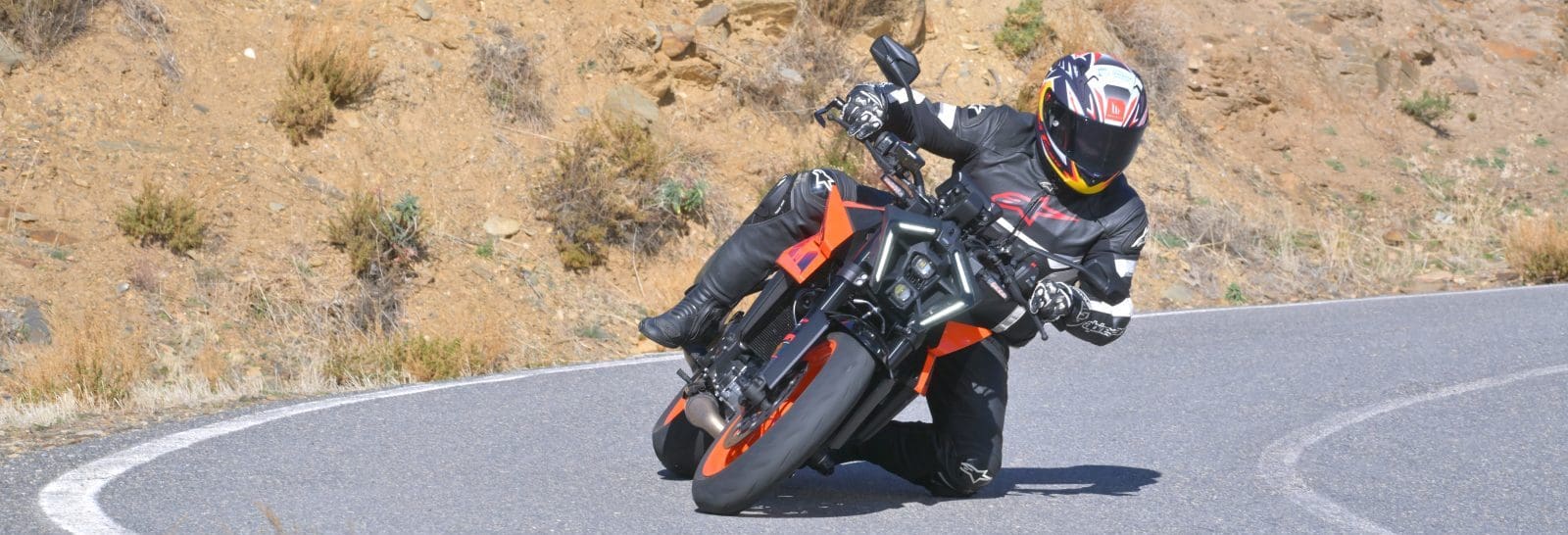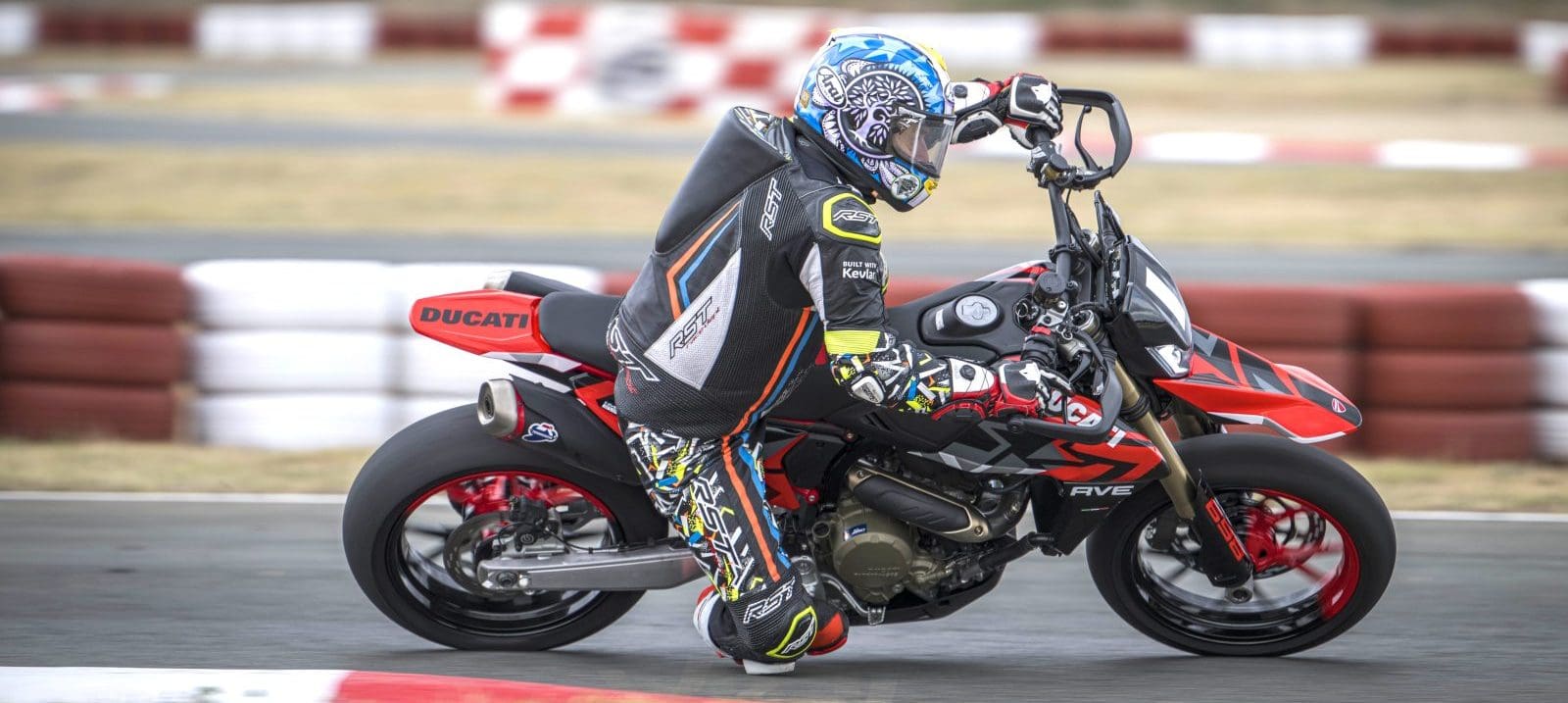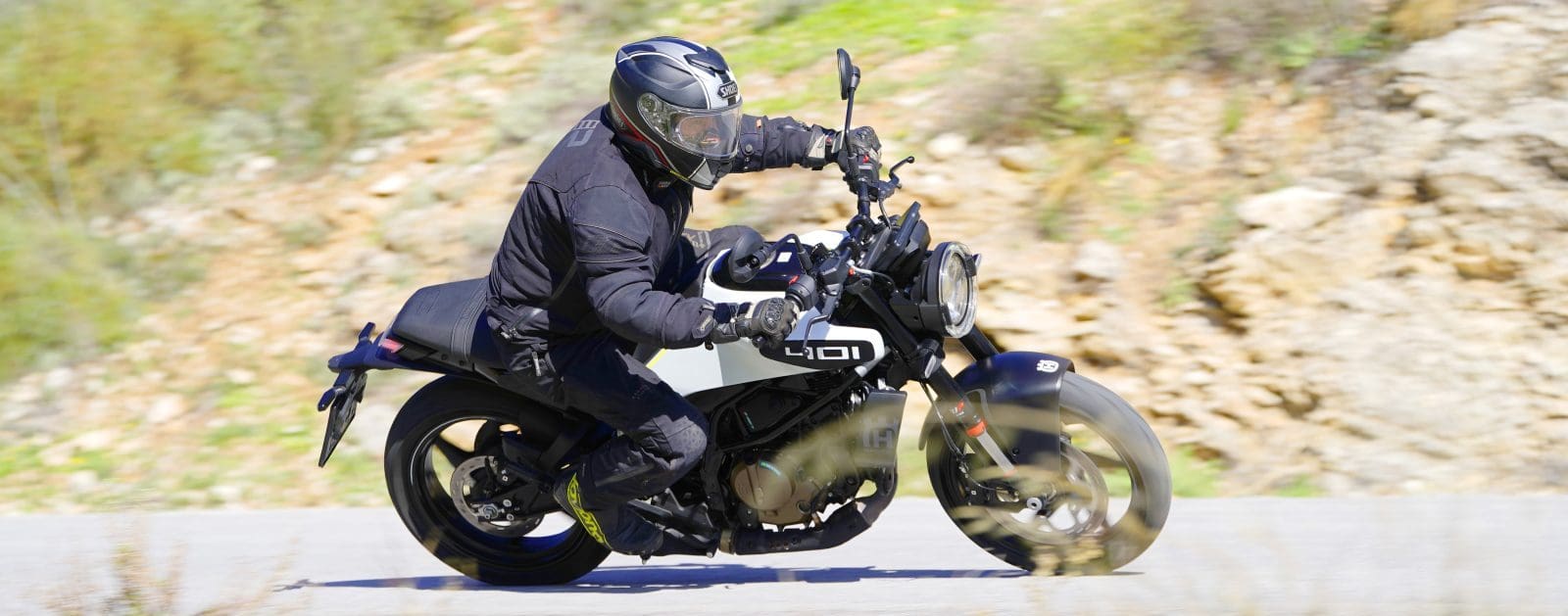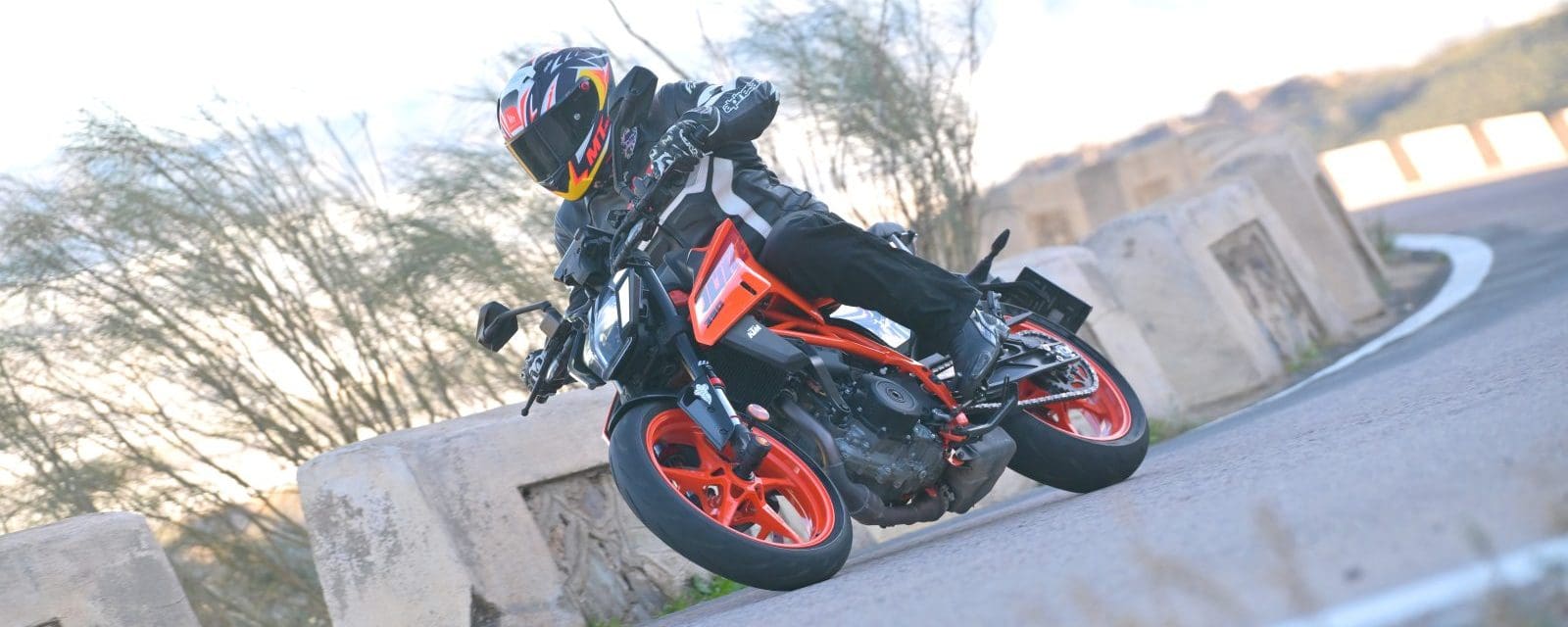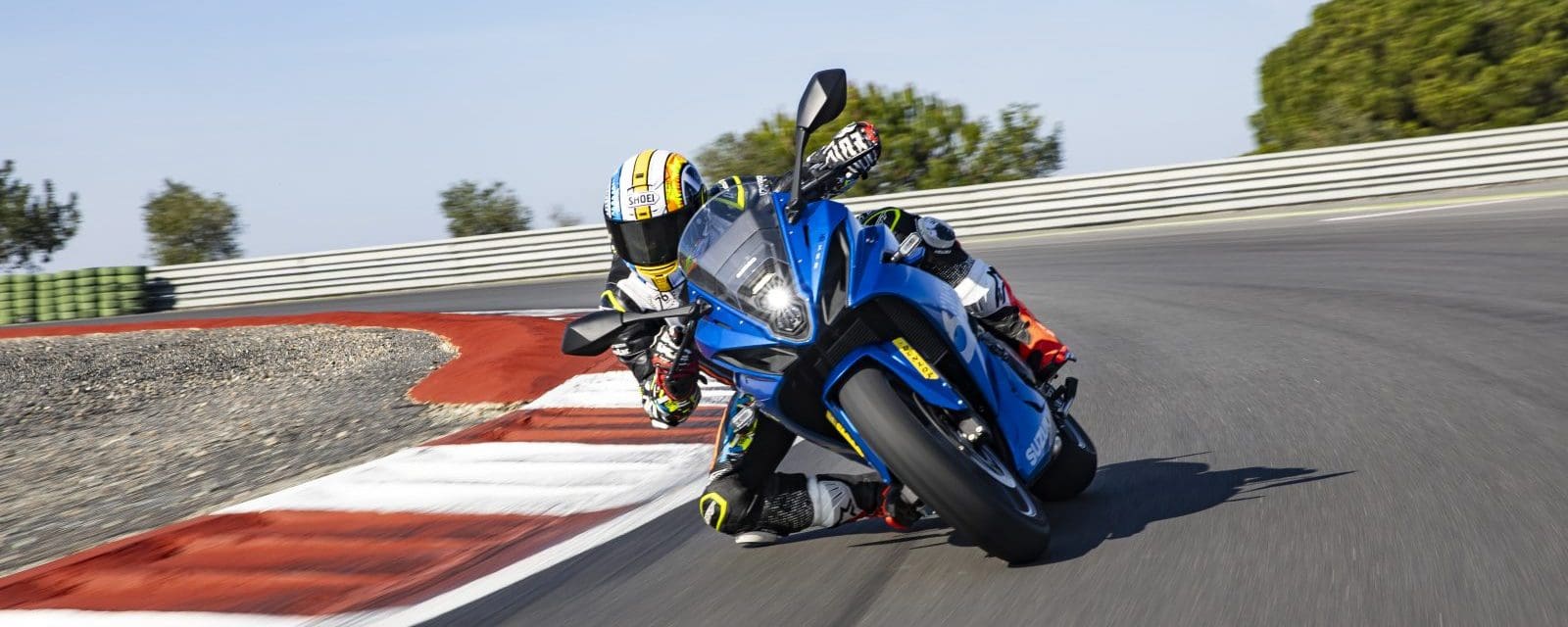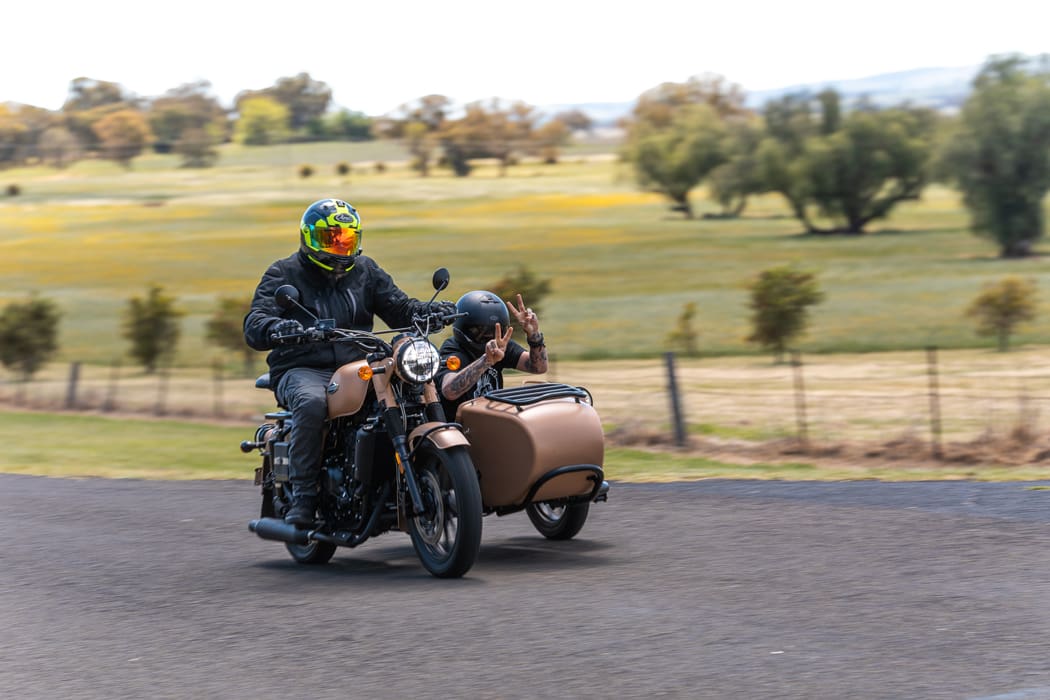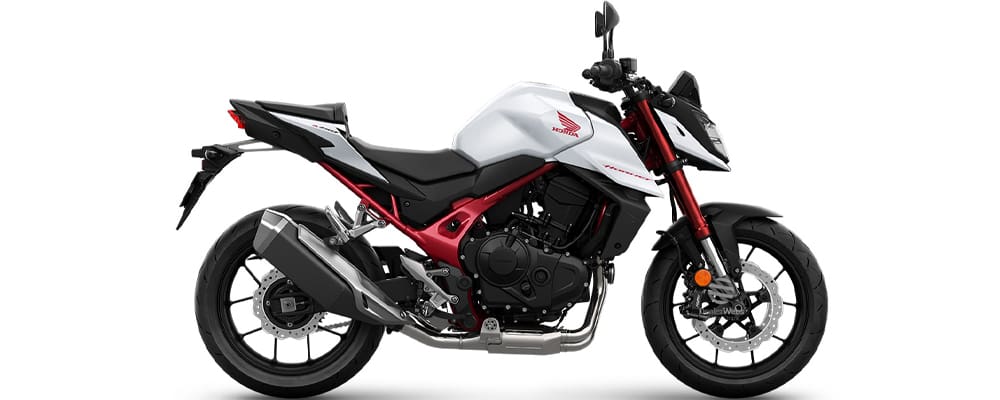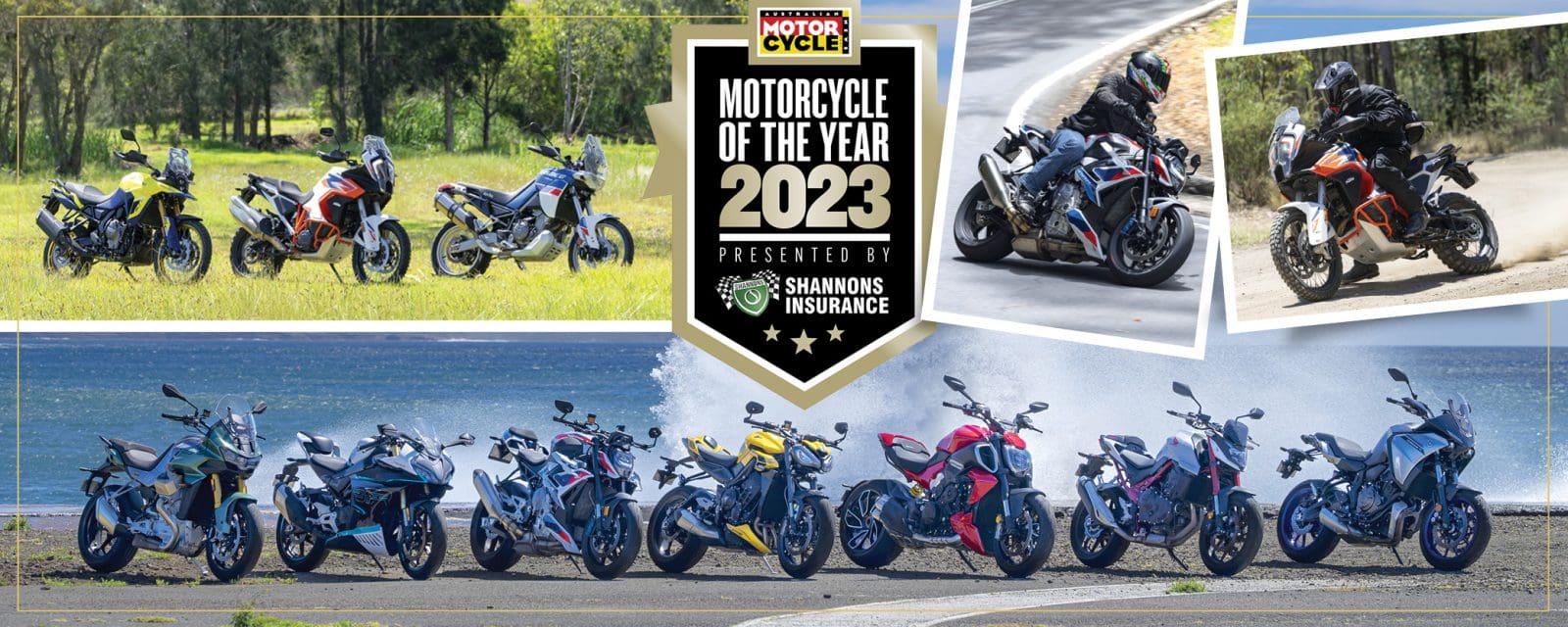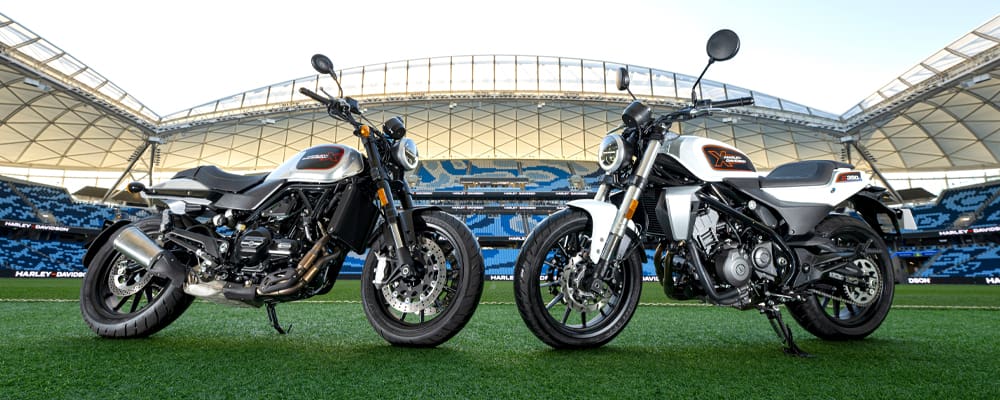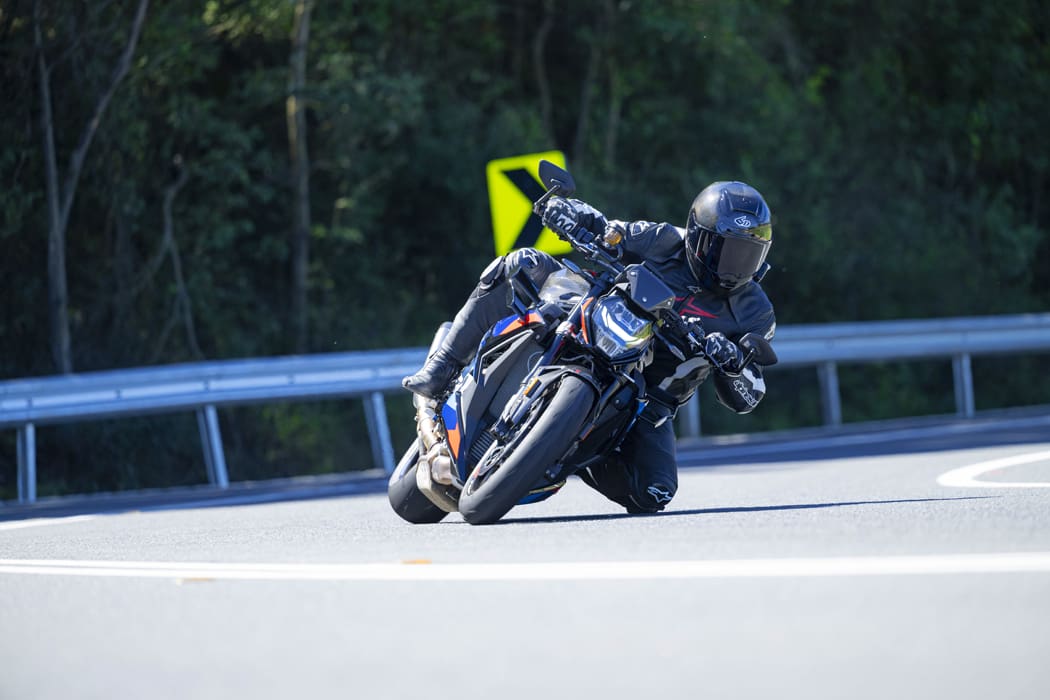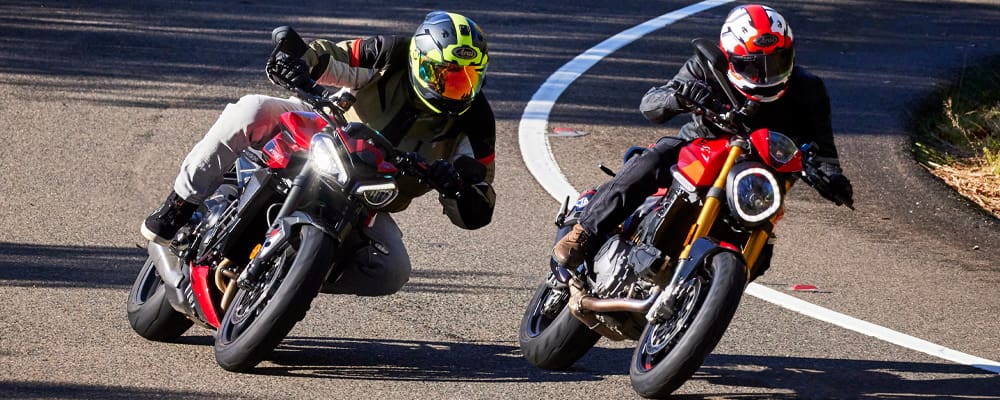It’s an exciting time for those in the market for a midsize nakedbike, with plenty of new entrants to the segment to suit a range of budgets, from the sub-$10k CFMoto 700 CL-X models through to the nigh-$20k Triumph Street Triple and the Ducati Monster. Pricewise, this all-new Suzuki GSX-8S sits bang in the middle at $14,190 ride away, along with Yamaha’s MT-07 HO ($14,449 ride away) and Honda’s new CB750 Hornet (about $13,500 ride away).

When AMCN posted a few pics and videos on socials from the launch of the GSX-8S, there was a standout comment: “Lost me at parallel twin”, but that’s selling the 8S short. Sure, the GSX-8S isn’t quite as powerful as the four-cylinder GSX-S750, but it’s a thoroughly modern bike with ride-by-wire throttle allowing for the inclusion of three selectable ride modes, in addition to three-mode switchable traction control system, assisted and slipper clutch, two-way quickshifter and, of course, Euro 5 emissions compliance. But more important than all that, this midsize naked is a blast to ride.

The GSX-8S is powered by the same 776cc parallel-twin that’s used in the recently launched V-Strom 800 DE. In the 8S it makes a claimed 61kW (82hp) at 8500rpm and 78Nm of torque at 6800rpm, and thanks to a 270° crank it sounds and feels like a 90° V-twin. While those peak power and torque claims are shy of the four-cylinder GSX-S750’s 84kW (114hp) and 81Nm, they are well up on Suzuki’s slightly smaller midsize naked SV650, which makes 56kW (76hp) and 64Nm. And Suzuki reckons the 8S is the ideal bike for those looking to step up from the SV650… as well as for others who might be interested in downsizing from larger-capacity bikes.
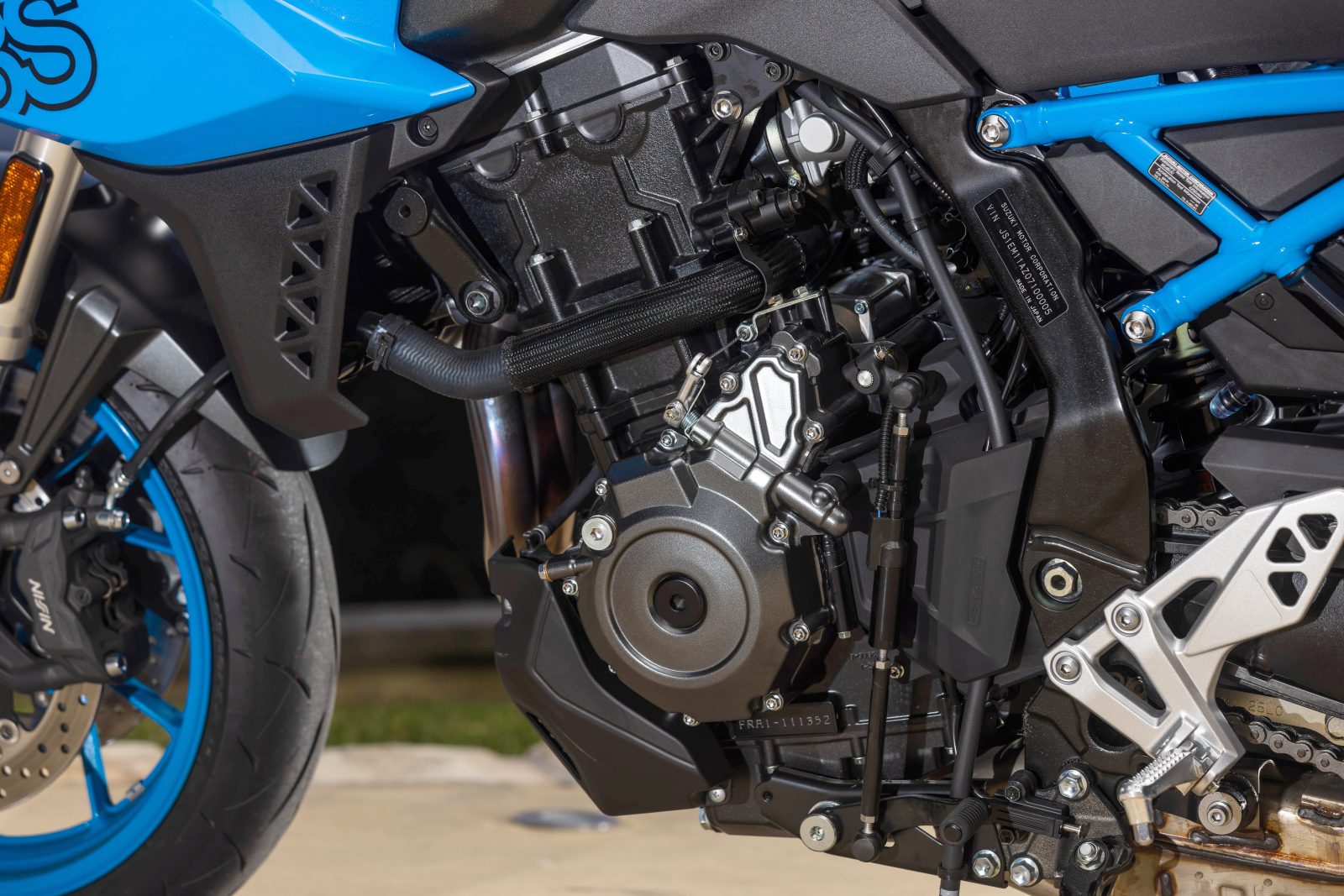
The Aussie launch of the GSX-8S included both road and track riding, the latter no doubt to prove that this new midsize nakedbike has what it takes to be more than just an urban commuter and a weekend runabout.
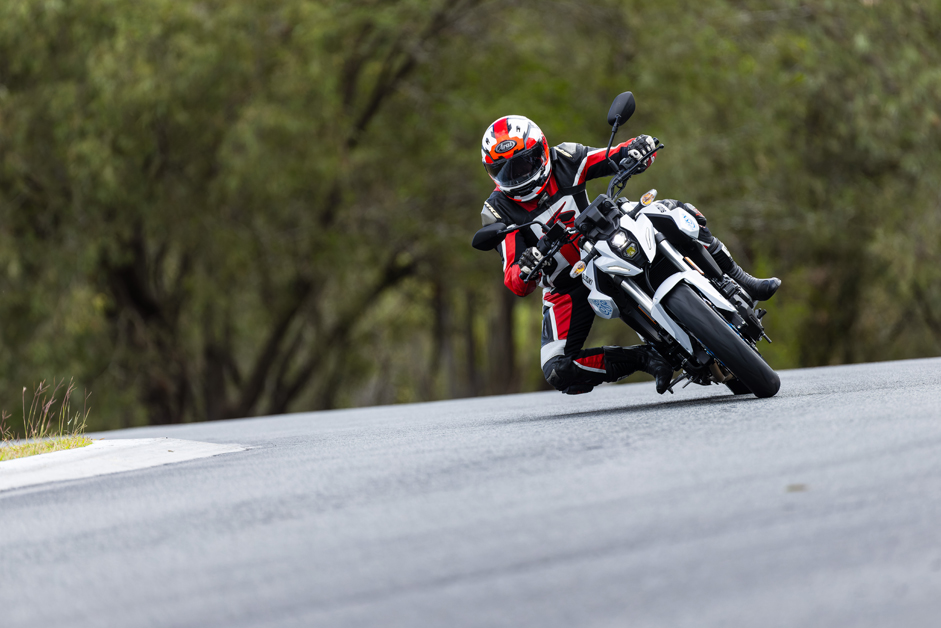
The road ride started off with a run through morning traffic along the Sunshine Coast before heading west through farmland and into the hills to Kenilworth. We turned south towards Mount Mee before finishing up at Clear Mountain for the night. The route was a good 300km and ideal for sampling a new bike, offering a good mix of roads and conditions, and with Lakeside booked for the following day there was no need for dubious on-road shenanigans.

The overall dimensions of the GSX-8S are similar to Suzuki’s GSX-S750 and GSX-S1000 models, with the same steep 25° rake angle but slightly more trail (104mm up from 100mm) for better stability. It’s a fair chunk lighter than its siblings with a kerb weight of 202kg, which is 10kg and 12kg lighter than the 750 and 1000 models respectively, and it feels it when you throw a leg over and lift it off the stand. The 810mm seat height is about class average and the seat itself is narrow where it meets the tank, and I could easily get both feet flat on the ground, while the wide handlebar is positioned at a height that allows for an upright riding position that’s well suited to daily riding duties through traffic.

The benefit of the GSX-8S’s three selectable ride modes became immediately obvious on the first section of the ride. The A, B and C modes stand for Active, Basic and Comfort, and although all three offer access to the engine’s full power, they change the power and torque delivery significantly: C mode has a dulled throttle response that takes any snatchy feeling out of the driveline; B mode offers snappier throttle response; and A mode is almost abrupt but still with well-sorted fuelling.
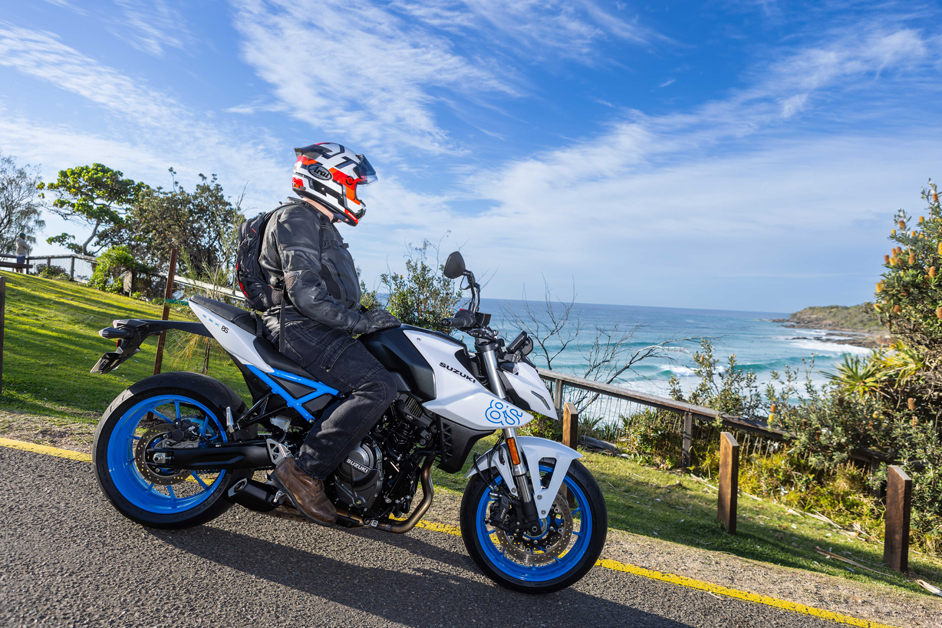
Swapping between ride modes and traction control settings is a piece of cake, thanks to the simple switchgear that consists of a mode button and up/down buttons on the left switchblock, and the selected settings are clearly displayed on the bright five-inch colour TFT display. Thankfully, the selected ride mode and TC settings are retained when you switch the engine off, so you don’t have to go through the whole process every time you start the bike. Incidentally, the GSX-8S has Suzuki’s Easy Start system, which means so long as the bike is in neutral and the ignition is on, you only need briefly tap the starter button to fire up the engine; it’s a minor benefit, but one that improves the day-to-day ownership experience.

The engine itself offers plenty of torque from low in the rev range, and it pulls cleanly from below 3000rpm. However, the midrange is where most riders will spend most of the time, with that torque peak of 78Nm coming in at 6800rpm. The engine itself feels smooth, no doubt thanks in part to the 270° crankshaft and to the two balancers positioned at 90° to the crankshaft, which Suzuki says is a first for a production motorcycle.
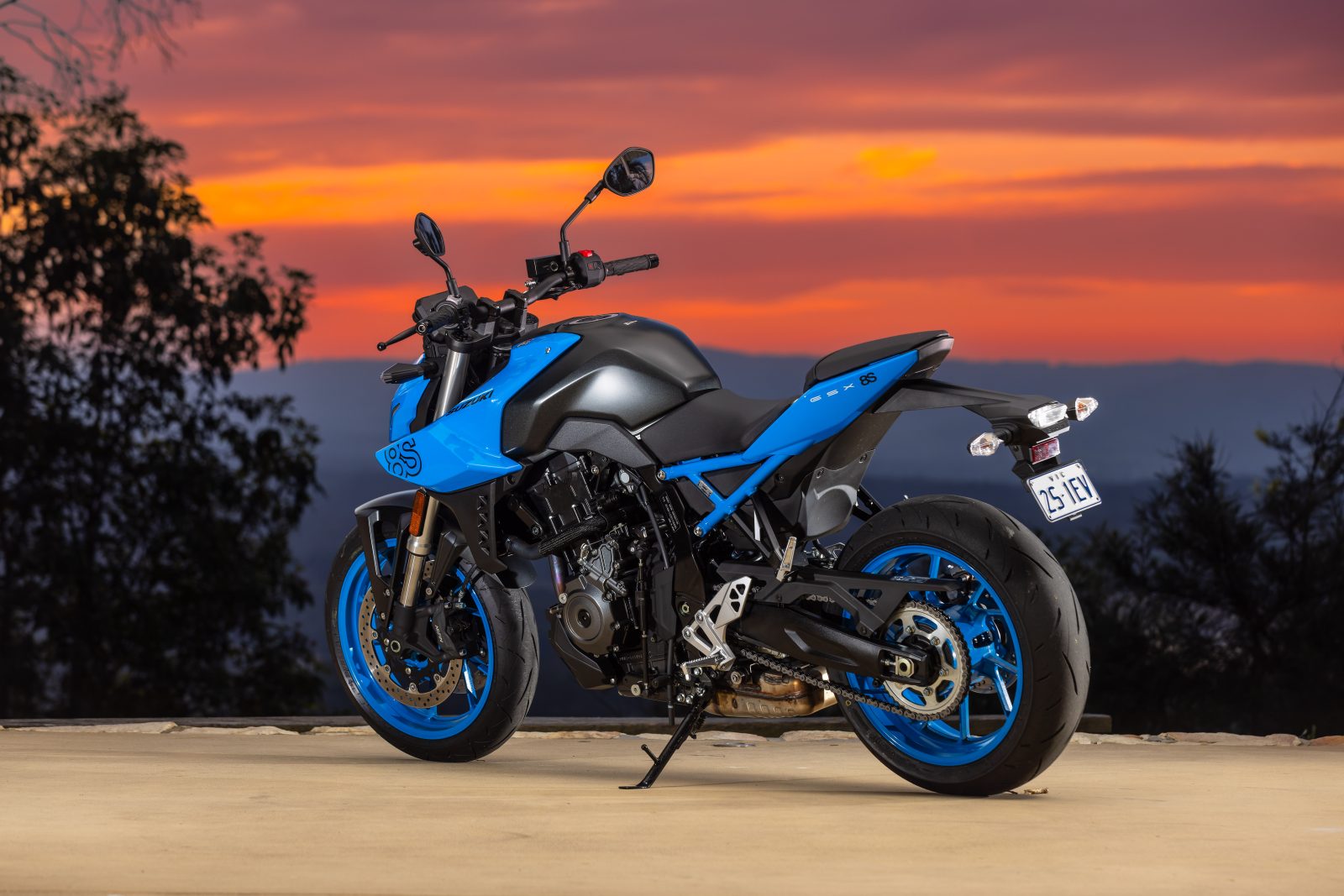
If you explore the upper half of the rev range, you’ll be rewarded with linear power delivery; there’s no sudden surge in output as revs climb towards the 9750rpm redline, but neither is there an abrupt drop-off just before the rev limiter kicks in. This is an engine that’s easy to get the most out of without having to wring its neck.

The quickshifter is standard fitment, and it works well in both directions – although sometimes a bit of clutch helps when downshifting on partial throttle openings. The clutch has assist and slipper functions, the former to lighten feel at the lever and the latter to prevent wheel hop when downshifting. Oddly, the clutch isn’t all that light at the lever, but it does have a progressive feel. The quickshifter can be deactivated in the settings menu, but I’m not sure why anyone would do that.

The GSX-8S has a steel-tube frame and subframe, with a newly developed aluminium swingarm. It runs a KYB non-adjustable USD fork up front and a KYB linkage mounted monoshock at the rear with preload adjustment. Hardly high-tech stuff, but the suspension works well over most surfaces, offering a good compromise between comfort and control, although the shock felt like it could use a bit more damping over rough and bumpy roads. I had no such complaints with the front-end, which felt well planted and offered reassuring levels of grip when cornering.
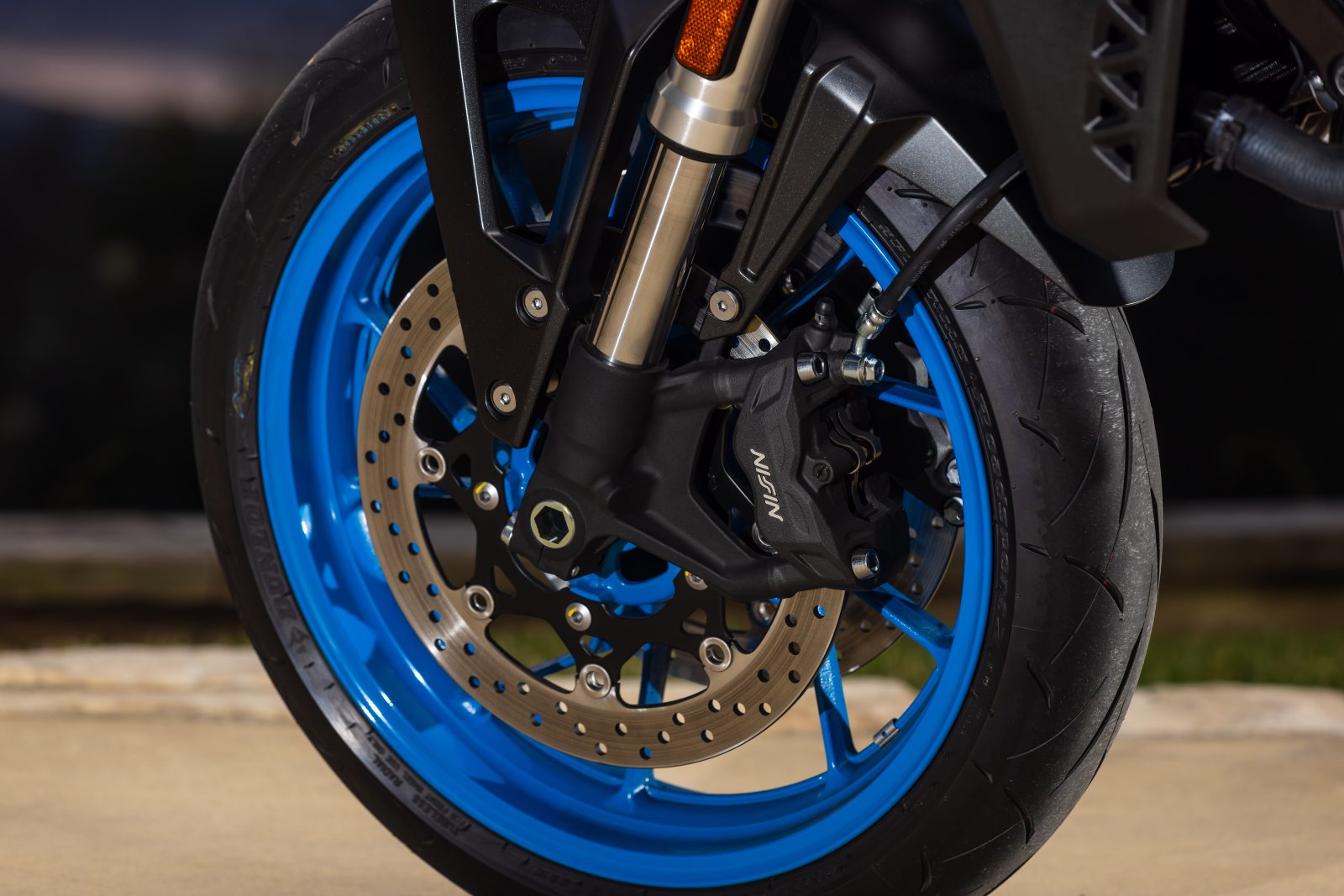
Tipping the lightweight GSX-8S into corners is a doddle with that wide handlebar offering plenty of leverage, and the steep 25° rake providing good response to steering inputs. Once cranked over it feels stable and offers plenty of ground clearance, and the Dunlop RoadSport 2 tyres perform well in mixed conditions on the road, the rear occasionally scrabbling for traction under hard acceleration out of corners in A mode and with the TC off. Most of the time I ran in B mode and with TC set to Mode 1 (the least amount of intervention) which prevented wheelspin completely without any noticeable effect on acceleration; it’s a good system and it works well.

Speaking of working well, the brakes are more than up to the task of hauling up the GSX-8S. The Nissin four-piston radial-mounted front calipers grip 310mm discs and they offer plenty of stopping power and good feel at the lever, and on dry surfaces you can apply plenty of brake pressure before there’s any ABS intervention. The single 240mm disc at the rear gripped by a single-piston caliper is likewise effective and offers good feel.
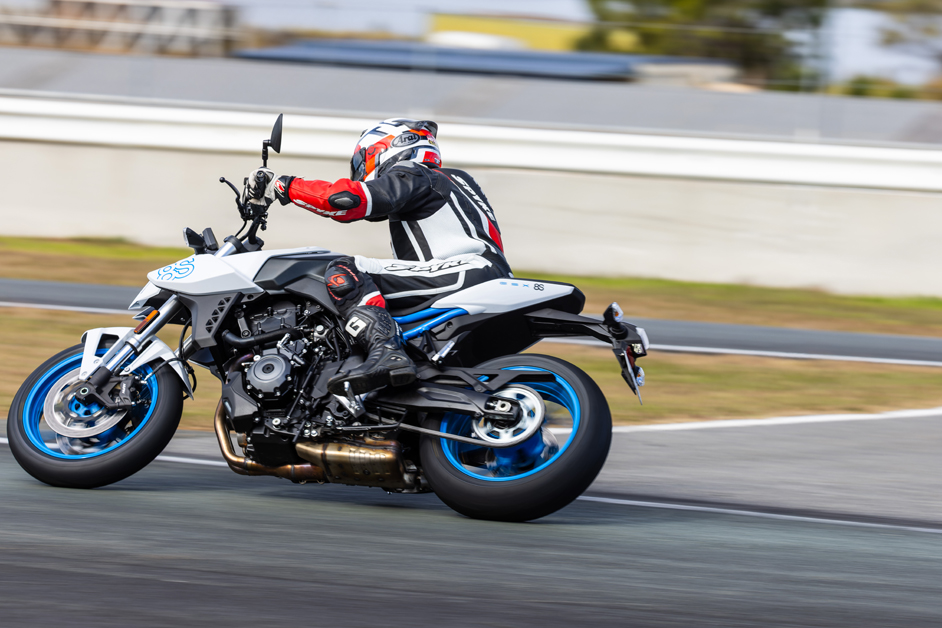
The 8S’s upright riding position is comfortable, and there’s enough room to crouch down as speeds increase. The seat itself is on the firm side, but for my frame the seat/handlebar/footpeg relationship was spot on. Of course, there’s stuff-all in the way of wind protection but at least I didn’t experience buffeting around my helmet at highway speeds.

After a solid day in the saddle, over a variety of roads, I felt as fresh as a daisy when we reached our destination. Suzuki claims an average fuel consumption figure of 4.2L/100km, so you should get around 300 clicks out of a tank.
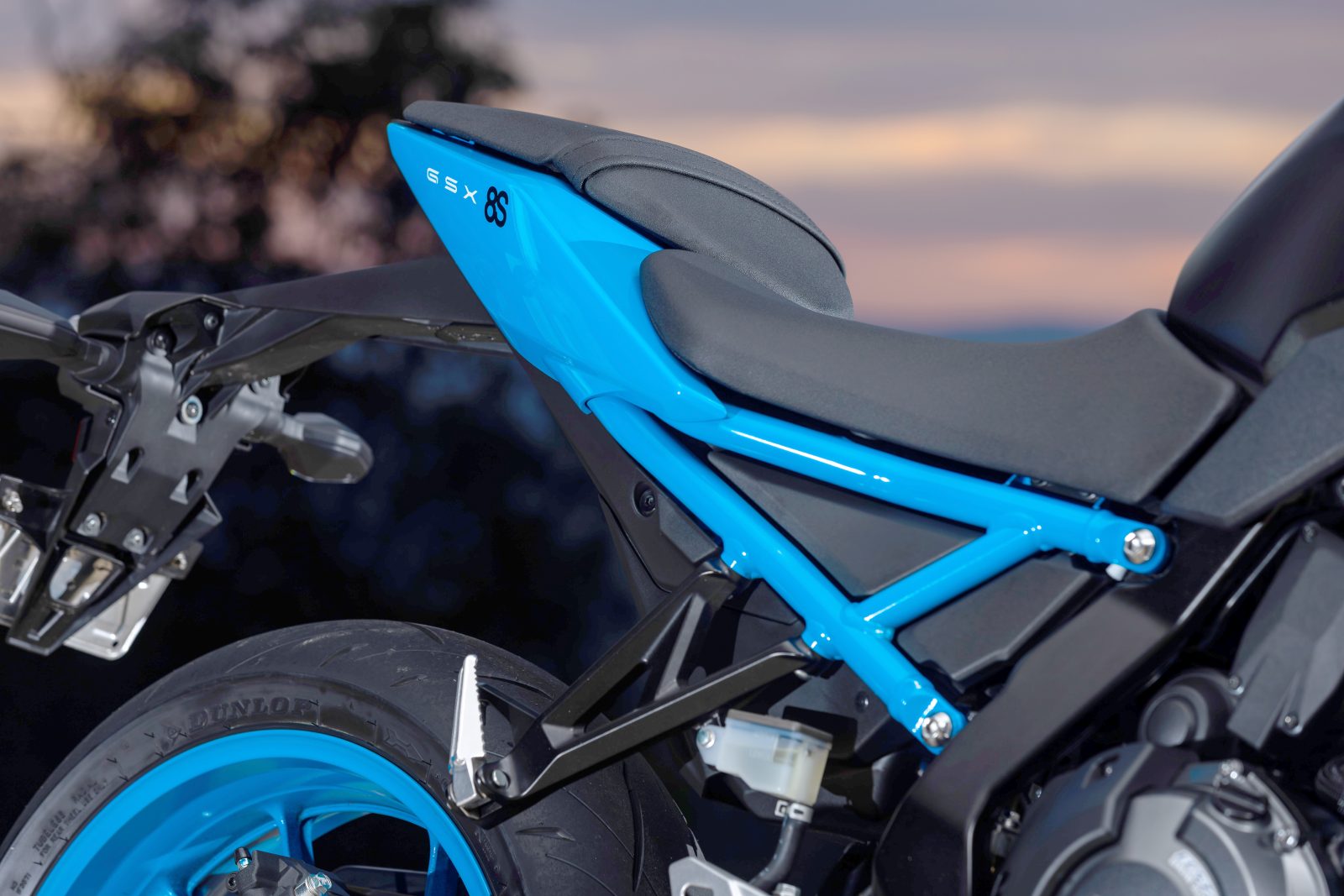
The front-end of the GSX-8S is dominated by vertically stacked LED high- and low-beam lights, and these are flanked by LED DRLs. At the rear, the tail/stop/turn-signal lights are all integrated into the mudguard, which gives the back of the bike a super tidy look, with no pillion grab rails to spoil the lines. Of course, this would make it difficult to tie a bag to the back seat had Suzuki not thought of fitting loops made from webbing to the underside of the rear seat that can be pulled out when required and stowed away when not needed.
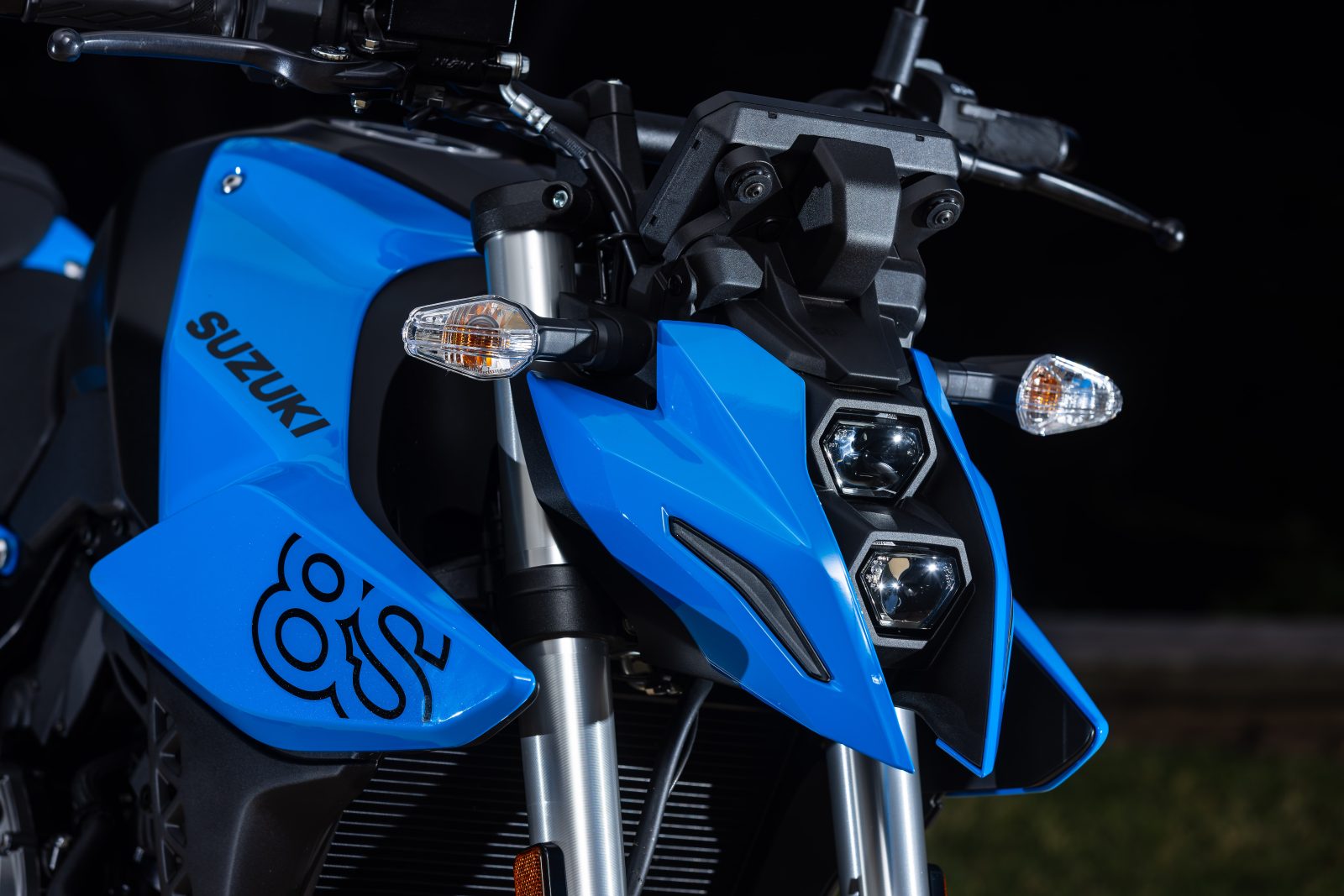
There are three colour schemes on offer: Pearl Cosmic Blue, Pearl Tech White and Metallic Black/Glass Sparkle Black. Suzuki afficionados will probably opt for the blue, but my fave is the white with its contrasting blue subframe and wheels. Regardless of colour choice, graphics are minimalist – as is that stubby little muffler down by the right footpeg. Fit and finish is impressive, and I reckon the overall design will appeal to many riders once they see the bike in the metal.
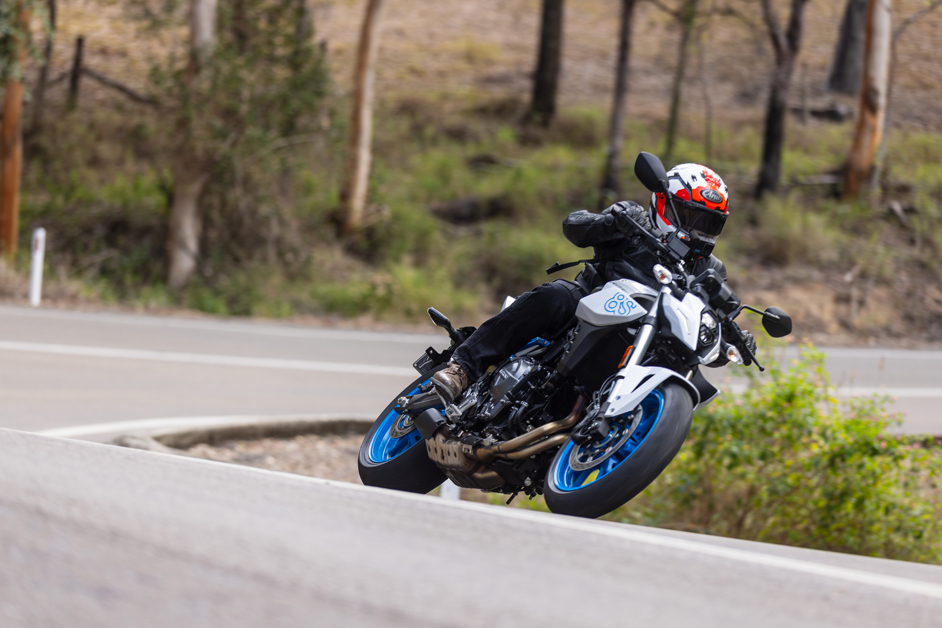
As mentioned, the five-inch TFT is bright, colourful and easy to read, with info clearly presented, especially the digital speedo, large tacho, ride mode, TC setting, gear-position indicator and clock. While there’s an engine-temp display, there’s no ambient temperature on the dash. The screen has day and night modes, and these can be manually or automatically selected, and the shift indicator can be set to light up anywhere between 4000rpm and 9250rpm.

After a solid day’s riding I came away impressed by the Suzuki GSX-8S, and am looking forward to seeing how it stacks up against its nearest competitors – the Honda CB750 Hornet and the Yamaha MT-07 HO. We’ve got that shootout lined up already, so keep an eye out for it.

Test Dean Mellor + Photography ikapture

